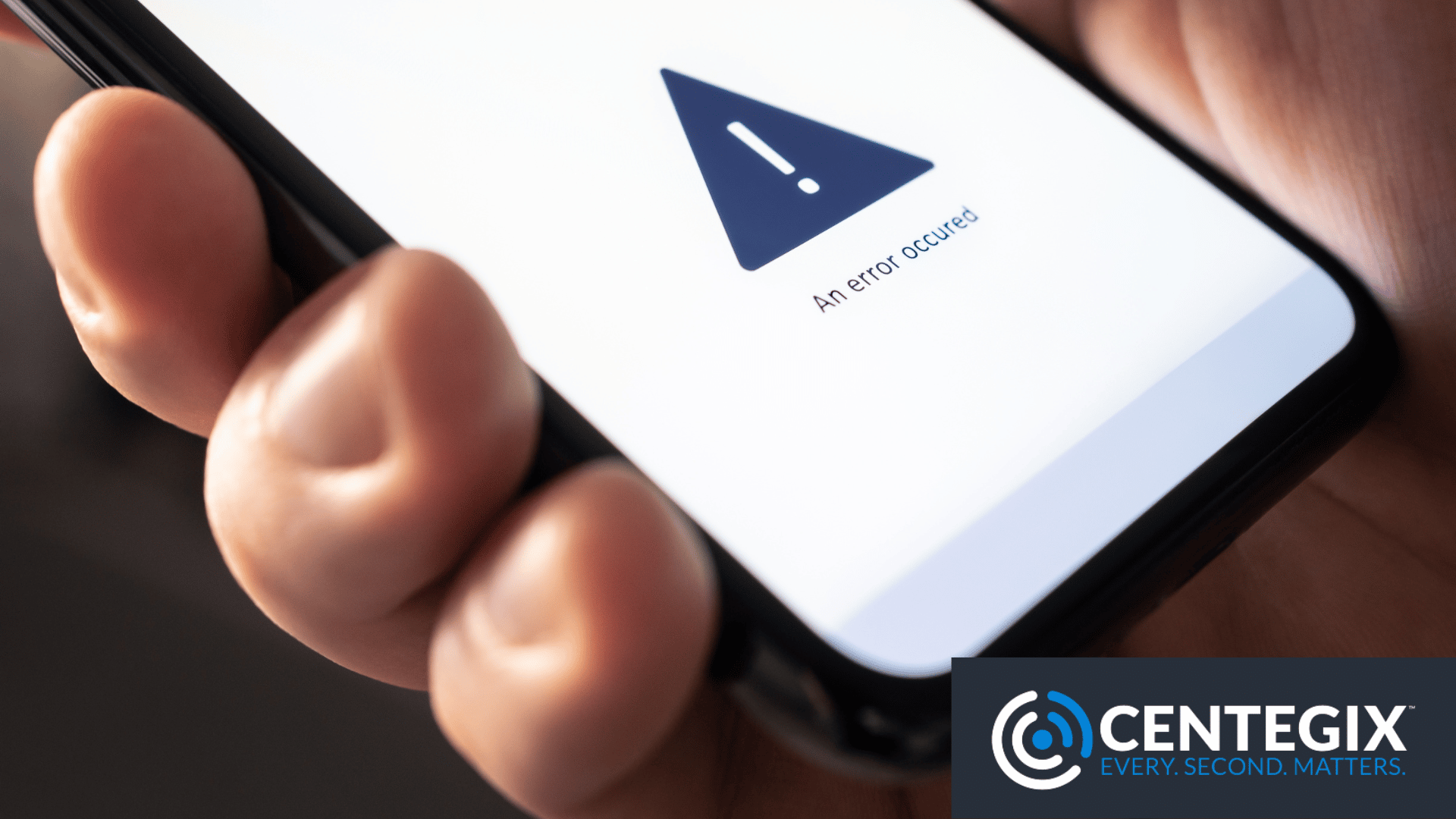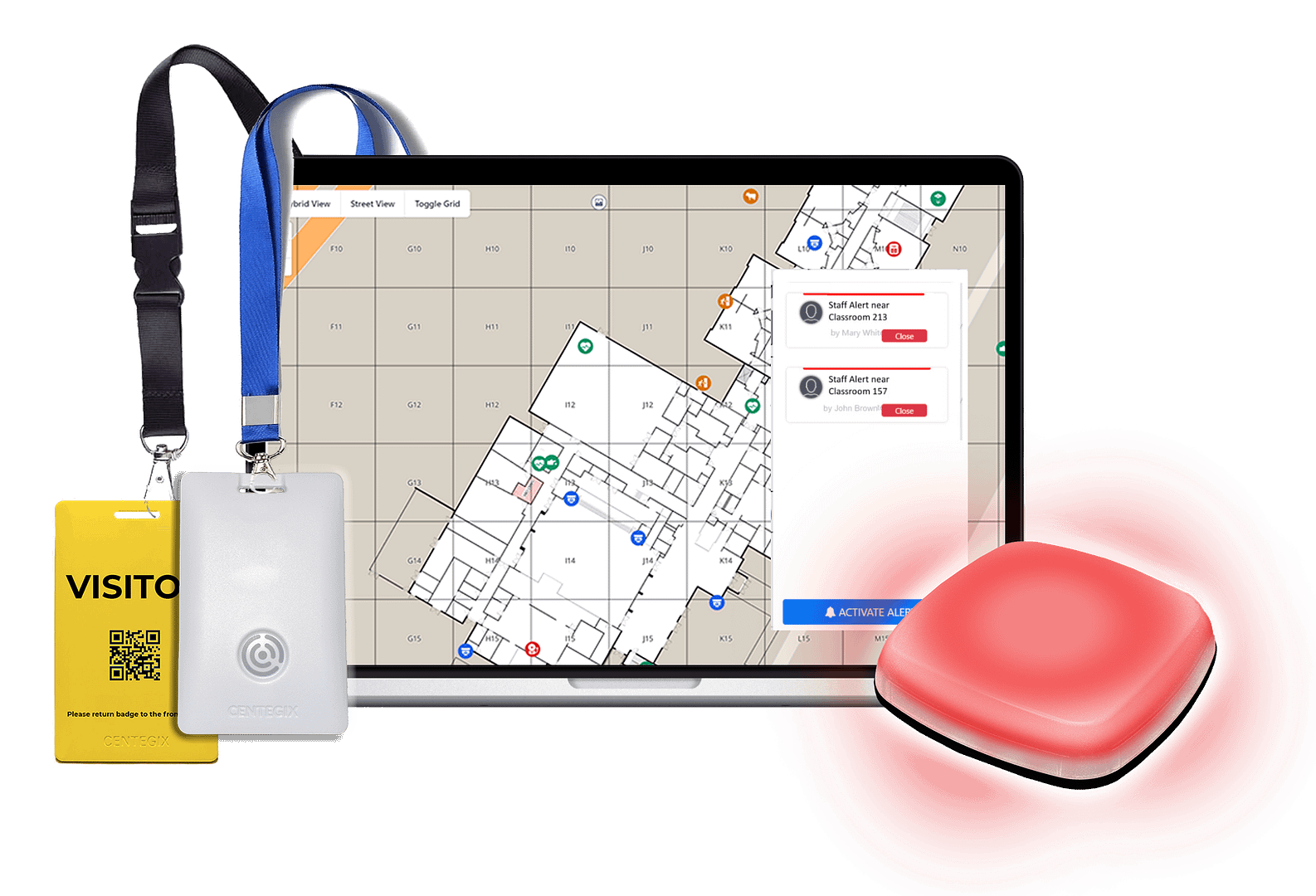Imagine the familiar hum as students walk the hallways, chat with friends, and part ways to enter classrooms and settle into their seats. While welcoming students into the classroom from their doorway, the teacher hears a loud *thump* and then a shriek, followed by more students yelling and screaming. When the teacher looks into the classroom, there is a student lying on the floor in a state of unknown medical distress.
The teacher reaches for their smartphone, searching for the school safety app installed on their device. This app—hailed as a savior in emergencies—is intended to provide and receive real-time alerts, evacuation routes, and vital instructions to school staff. But as the teacher frantically taps on their screen, nothing happens. The app fails to respond.
Panic grips the teacher as they realize they are unable to communicate the critical information needed to ensure the health and safety of the student and keep everyone else calm. The seconds feel like an eternity as they grapple with the harsh reality that the app—their lifeline—has betrayed them in their time of need.
In a time when technology permeates every aspect of our lives, it is no surprise that school safety apps have emerged as a popular solution. The promise of instant notifications, real-time updates, and improved emergency response seems like the ideal solution to the increasing safety issues schools face. Yet, as we delve deeper into the world of these apps, we discover a multitude of flaws and inadequacies that cast doubt on their effectiveness.
Here are nine reasons why mobile apps for school safety don’t work:
Reason 1: Personal Phones Aren’t Used for Work Situations
The first stumbling block faced by school safety apps is their inability to achieve a 100% adoption rate. Mandating the use of personal devices for work-related purposes encroaches upon the employees’ rights to personal property. To provide their full attention to their students and instruction, teachers feel strongly that their phone should be away, in a drawer or a bag, not on their person where it can distract from the task at hand.
Moreover, data privacy concerns loom large. Educators often believe that an app on their private phone will be used to track their movements, even when they are off campus and off duty. Relying on personal devices and app downloads can make it even more challenging to garner widespread acceptance and compliance.
Another consideration? “School personnel’s use of their personal devices to conduct school business has several legal implications for school districts“
One such implication is the possible violation of Family Educational Rights and Privacy Act (FERPA). The United States Department of Education’s Family Policy Compliance Office (“FPCO”) has previously applied FERPA laws to email communications sent to teachers about disciplinary consequences issued to students. This means that emails sent to and from families and a school staff member’s personal device could be a violation of FERPA law (Hitch et al., 2018).
Should there be any school records stored on an employee’s personal device, they are subject to subpoena from a third party—something all districts must keep in mind when requiring the use of personal devices for school business.
Reason 2: Apps Rely on Wi-Fi or Cell Phone Connectivity
The reliance on Wi-Fi or cell phone connectivity is a major Achilles’ heel for school safety apps. Wi-Fi strength will vary from strong to weak or nonexistent from one end of a school campus to the other. Stairwells, bathrooms, and basements can render mobile apps useless when connectivity isn’t possible. During emergencies, network congestion is common. Thus, delays or failures in transmitting emergency alerts and real-time updates are inevitable. This dependency on connectivity puts lives at risk, as critical information may not reach the intended recipients promptly, reliably, or at all. Evidence shows that reduced response time saves lives.
Reason 3: Apps Require Training and Have Poor User Experience
Effective use of school safety apps relies on adequate user training, which is often neglected. Without proper instruction, staff members may struggle to navigate the complexities of the app. This can result in confusion and delayed response during emergencies. Furthermore, poor user experience, with unintuitive interfaces and cumbersome features, hinders quick and efficient interaction with the app.
Reason 4: Apps Glitch and Crash
The unreliability of school safety apps is painfully evident when faced with glitches and crashes. In emergencies, every second matters. Any disruption or malfunction can have dire consequences. The failure of these apps to deliver consistent performance undermines their reliability. This leaves users stranded and compromises the safety of those relying on them.
Reason 5: Apps Have Limited Location Accuracy
Precise location mapping is crucial during emergencies, but school safety apps fall short in this aspect. Reliant on GPS technology, these apps struggle with accuracy. This is exacerbated within large school buildings or areas with poor signal reception. In high-stress situations, knowing the exact location of individuals becomes a matter of life and death. Any imprecision creates delays in response.
Reason 6: Apps Lack Continuous Monitoring Without a Data Dashboard
Being able to respond to emergency situations is critical, but what about being able to prevent them? School safety requires constant vigilance, but school safety apps often lack a comprehensive data dashboard for continuous monitoring. Without real-time insights into incidents and security trends, schools are left reactive rather than proactive. This lack of data prevents them from being able to identify and address potential threats. Furthermore, it robs schools of the ability to make critical decisions about resource allocation.
Reason 7: Apps Have Cost and Maintenance Concerns
Some school safety apps can cost upwards of $35,000 for annual license and set-up fees. Implementing and maintaining school safety apps can be financially burdensome for cash-strapped educational institutions. Costs associated with app licensing and maintenance may divert resources from other critical areas of school safety. Requiring staff to use personal devices for school safety apps may create additional financial burdens, as schools may be expected to provide compensation or subsidies for their usage.
Reason 8: Apps Lack Integration With Campus Security Systems
Effective school safety requires seamless integration with existing campus security systems. But school safety apps often operate independently, failing to integrate with surveillance systems, access control, or alarm systems. This lack of synergy hampers the entire security infrastructure and compromises the effectiveness of the emergency response. Also, as school safety legislation passes in states across the country, districts will be required to follow those regulations. Investing in expensive apps that may not comply with state legislation results in wasted resources.
Reason 9: Apps Are Subject to Human Error
Despite their potential, school safety apps are ultimately reliant on human interaction. Users may:
- forget to activate the app during an emergency
- neglect to update their location information
- make errors in reporting incidents due to high stress or panic in the moment
The effectiveness of these apps is diminished when human error comes into play. In high-stress situations, the margin for mistakes is minimal. Relying solely on apps leaves room for critical lapses in judgment and execution. We cannot afford to entrust the safety of our schools to the fallibility of human actions.
A Wearable Safety Solution is Key to Improved Campus Security
The deficiencies of mobile phone apps have been laid bare. Superintendents across the country agree that reliability and efficacy are integral components of a campus security system. The need for a more dependable, precise, and effective solution is evident.
Superintendent Jeremy Gulley of the Jay School Corporation in Indiana shared, “What I just wanted to know is, ‘Can I count on it? Can I reliably count on it?’ And that has been solved. So a lesson learned for us is, it’s like anything else in life. You get what you pay for. So there are a lot less costly options, but if they don’t work, then you’ve not made this campus safe. It may make you feel better, but it’s not effectively addressing the problem.”
A wearable panic button badge, like CrisisAlert, is the key to improved campus security. Its features include:
- Hands-free functionality
- Room level accuracy, including floors
- 100% coverage of indoor and outdoor spaces on campus
- Visual alerts with lighted strobes and desktop messaging
- Audio alerts integrated with intercom systems
- The CrisisAlert Dashboard, which provides easy access to district data to understand and identify ways to best support school safety.
Let us prioritize the safety of our students and staff by embracing technology that works. Invest in CrisisAlert wearable panic button badges and ensure the protection of your educational institution. Check out our funding guide to find federal, state, and private sources to help purchase safety technology for your schools.
Sources
Hitch, R., McPherson, B., & Schwartz & Shaw, P.L.L.C. (2018). But It’s My Cell Phone: Methods and Consequences of Using a Personal Device for School Business. 2018 School Law Seminar, San Antonio, TX. https://cdn-files.nsba.org/s3fs-public/02_07_But_It’s_My_Cell_Phone_Hitch_McPherson.pdf










